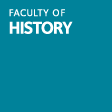In the three decades following World War II, French farming was transformed. At Liberation in 1944, the vast majority of French farms looked as they had in the nineteenth century, but by the middle of the 1970s, France was the world’s second largest exporter of agricultural goods. To achieve this rapid transformation, the French state pursued a high-modernist program of agricultural industrialization. As part of this program, the state created a highly controversial land reform organization, the Société d’aménagement foncier et d’établissement rural (SAFER). Through focusing on a single case study that pitted a local community against the SAFER, this article demonstrates how the French state was able to engage farmers in a brutal war of attrition while simultaneously refusing to take full responsibility for the social consequences of its modernization mandate.



